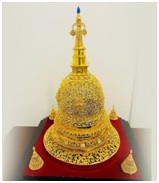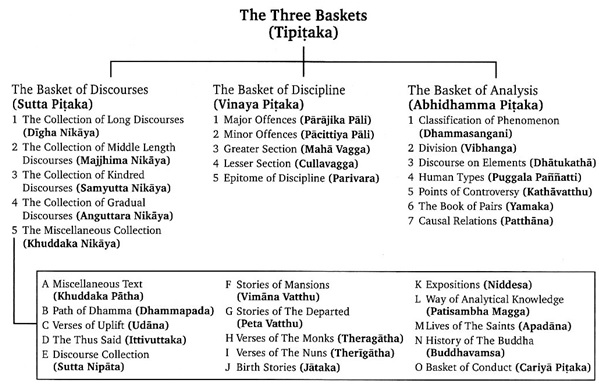

|
Overview:
|
Context
The Four Holy relics of Lord Buddha are taken to Mongolia for display for 11 days to coincide with the Mongolian Buddhist festivals of Purnima.
- The four relics come from among 22 Buddha relics, known as the Kapilavastu relics.
- In Mongolia, the Holy Relics are on display at the Batsagaan Temple within the Gandan Monastery building
Background
- The Holy Buddha Relics is known as the 'Kapilvastu Relics', first discovered in 1898.
- It was originated in the area of ??Bihar, which is believed to be the ancient city of
- Located at the stupa site in Piprahwa (near Siddharthnagar in Uttar Pradesh), an inscribed casket was found.
- This helped in identifying the ancient city of Kapilavastu.
- The inscribed casket contained relics of Buddha and Sakya, his community.
- The relics are currently housed at Delhi’s National Museum.

Signs of the Buddha:
- As per the Buddhist belief, at the age of 80 (486-483 BC), lord Buddha obtained salvation in Kushinagar (Uttar Pradesh).
- Lord Buddha was cremated as a universal king by the Mallas of Kushinagar.
- His funeral relics were collected and divided into eight shares to be distributed among them
- Ajathsatrus of Magadha
- Vaishali'sLicchavis
- the Sakyas of Kapilavastu
- Housing in Kushinagar
- Alakappa Bullies
- Mallas of Pava
- the Colossians of Ramagrama once
- Brahmana of Vethadipa
- The purpose was to place stupas on sacred relics.
- Other stupas appeared, one on top of the pipe where the remains were collected and the other on the coals.
- The remains were later excavated by Ashoka - ruler of the Maurya Dynasty, who ruled almost the entire Indian subcontinent from c. 268 to 232 B.C.
- He dispersed the remains and built stupas over them throughout his district.
- According to Ashokavadana, Ashoka had relics of Buddha placed on 84,000 stupas made up of Yakshas (usually gentle natural spirits).
India-Mongolia relationship
- Mongolia regards India as its “third” and a “spiritual neighbour”. The year 2022 marks the 67th anniversary of diplomatic ties between India and Mongolia.
- The spiritual connect between India and Mongolia continues to bind the people of our two nations.
- The bilateral relationship was upgraded to a Strategic Partnership in 2015 during the historic visit of Prime Minister which has proven to be a watershed event in India’s bilateral relations with Mongolia.
- Since then, bilateral cooperation with Mongolia has expanded and has seen significant growth.

Buddhism in India:
Origin:
- Siddhartha Gautam, born in 563 BC, was part of the Sakya royal family that ruled from Kapilvastu, Lumbini. At the age of 29, Gautama left home and led a life of self-denial.
- After 49 days of meditation, Gautama received enlightenment under a pipal tree at Bodhgaya in Bihar.
- Buddha made his first sermon in the village of Sarnath, near the town of Benares in the UP. The event is known as the Dharma-Chakra-Pravartana (legal wheel revolution).
- He died at the age of 80 in Kushinagara, a city in the UP. The event is known as Mahaparinibban.

The rules of Buddhism:
- Middle Path: Avoid both extremes of worldly pleasure and the practice of extreme self-The Buddha instead called the 'Madhyam Marg' or the intermediate method to be followed.
- Four good truths: Suffering (dukkha) is the backbone of the world, All suffering has a reason - Samudya, Suffering can end - Nirodha, Can be gained by following AtthangaMagga
- Eight-Way Ways: Positive Views, Proper Objective, Proper Speech, Proper Action, Proper Health, Positive Thinking, Positive Effort, Positive Concentration
- Five Principles or Pancasil- Violence, theft, sexual misconduct, lying or gossip, drunkenness
Major Buddhist texts:
- Three pitakas: VinayaPitaka (moral code), SuttaPitaka (Dhamma Buddha): Divided into five Nicayas: Digha, Majjhima, Samyutta, Anguttara, AnguttaraKhuddaka, AbhidammaPitaka (philosophical analysis)
- Other important Buddhist texts include Divyavadana, Dipavamsa, Mahavamsa, Milind Panha etc.

Buddhist councils:
- First: It was held in the Sattapani cave at Rajgriha shortly after Mahaparinirvan Buddha, about 483 BC under the rule of King Ajatshatru and was led by Mahakasyapa, a monk.
- Second: held at Vaishali under the reign of King Kalasoka in 383 BC. It was owned by Sabakami.
- Third: 250 BC at Patliputra under Ashoka rule and led by MoggaliputtaTissa.
- Fourth: held in 72 AD in Kundalvana, Kashmir. It was controlled by Vasumitra, while Asvaghosa supported him under the direction of King Kanishka of the Kushan Empire. Buddhism is divided into Mahayan and Hinayan.
Buddhist Schools:
- Mahayana: literally means "Great Car". It believes in the heaven of the Buddha and the idolatrous worship of the Buddha and the Bodhisattvas including the Buddha Nature.
- Hinayana: A small car literally. It believes in the original teachings of the Buddha or the Doctrine of the Elders. He does not believe in idolatry and seeks to gain personal salvation through self-discipline and meditation.
- Theravada: is a Hinayana sect, founded in Sri Lanka and later spread throughout Southeast Asia.
- Vajrayana: means "Car of Thunder", also known as tantric Buddhism.
- Zen: It is a school of Mahayana Buddhism founded in China.
How does Buddhism still operate in recent times?
- Non-Violence: Buddhism preached a non-violent approach, gaining significant significance in the aftermath of the Middle East crisis.
- Middle path: At the diplomatic front non-alignment policy is the unique example of middle path, which fosters the ideas to collaborate with every nation.
- Mutual co-existence: Buddhism had preached for mutual co-existence and tolerant policy for all religions, one should not disrespect others belief and faith to protect one's own religion, promoting fraternity among the citizens.
Conclusion:
The recent cultural exchange and soft power diplomacy will provide a stronger base to strengthen up the diplomatic relations between India and Mongolia. The urgency of Buddhist’s ideology is increasing in the recent events of Middle-east crisis and societal clashes.


